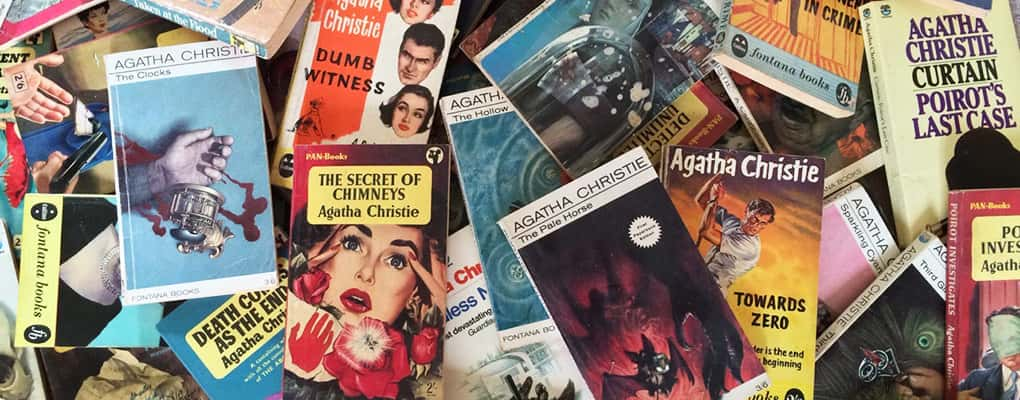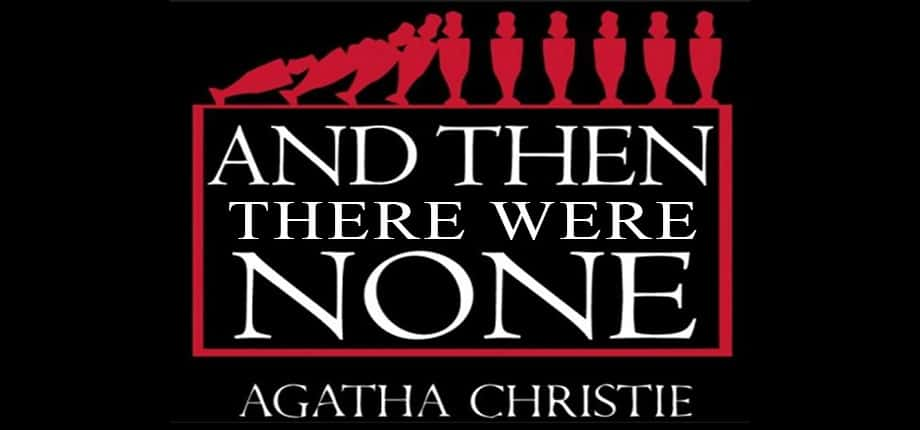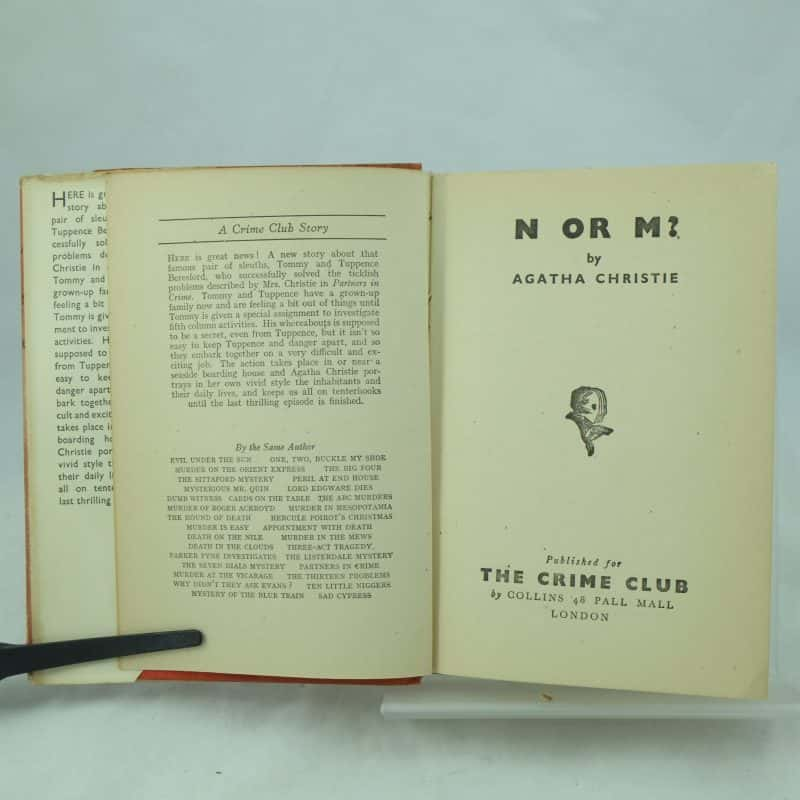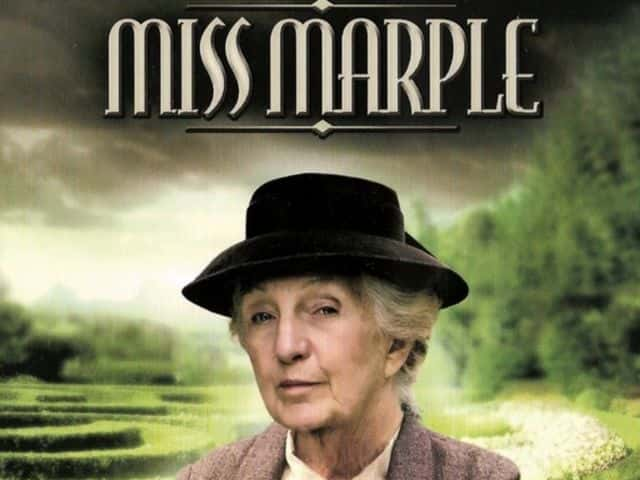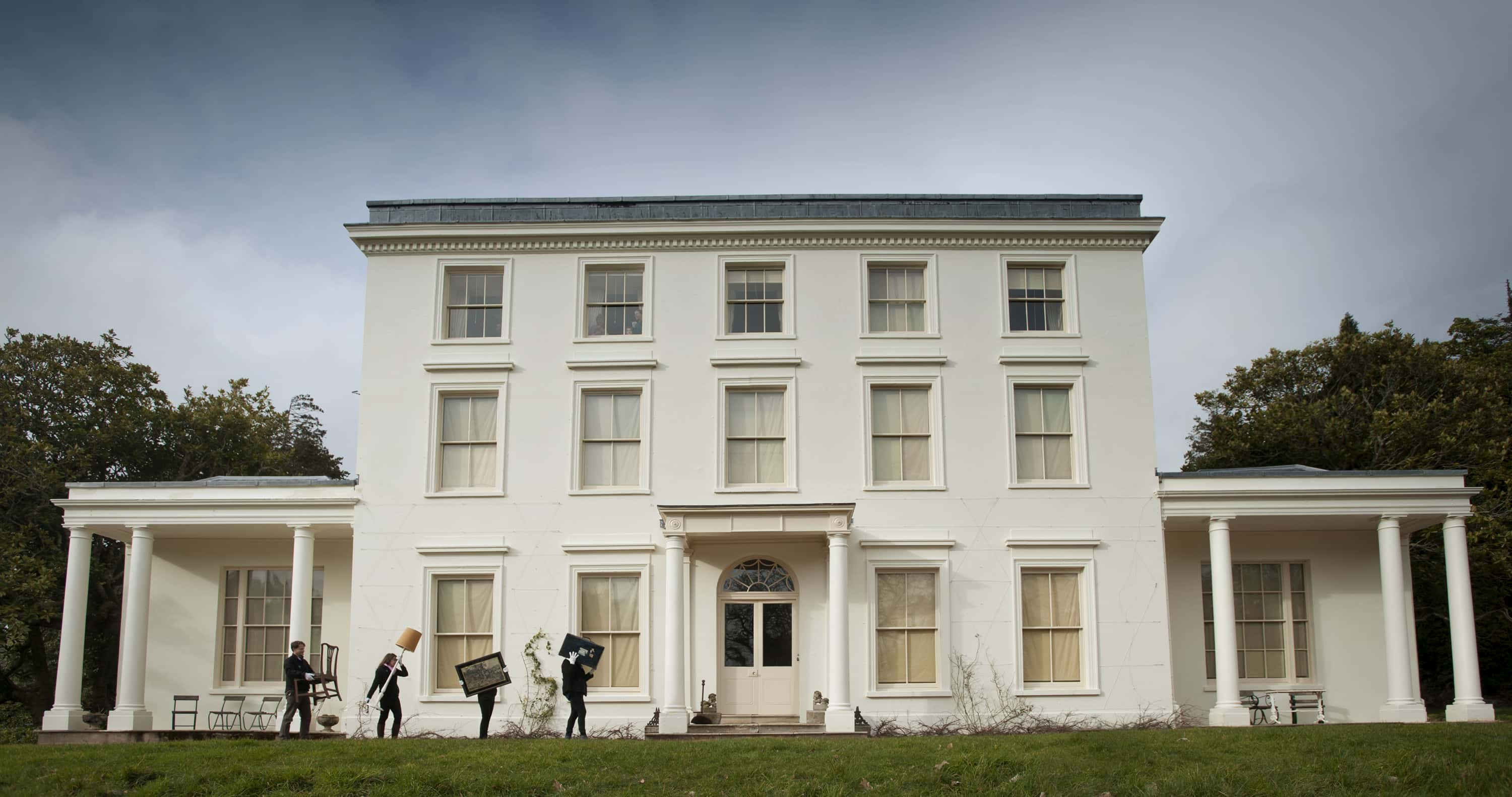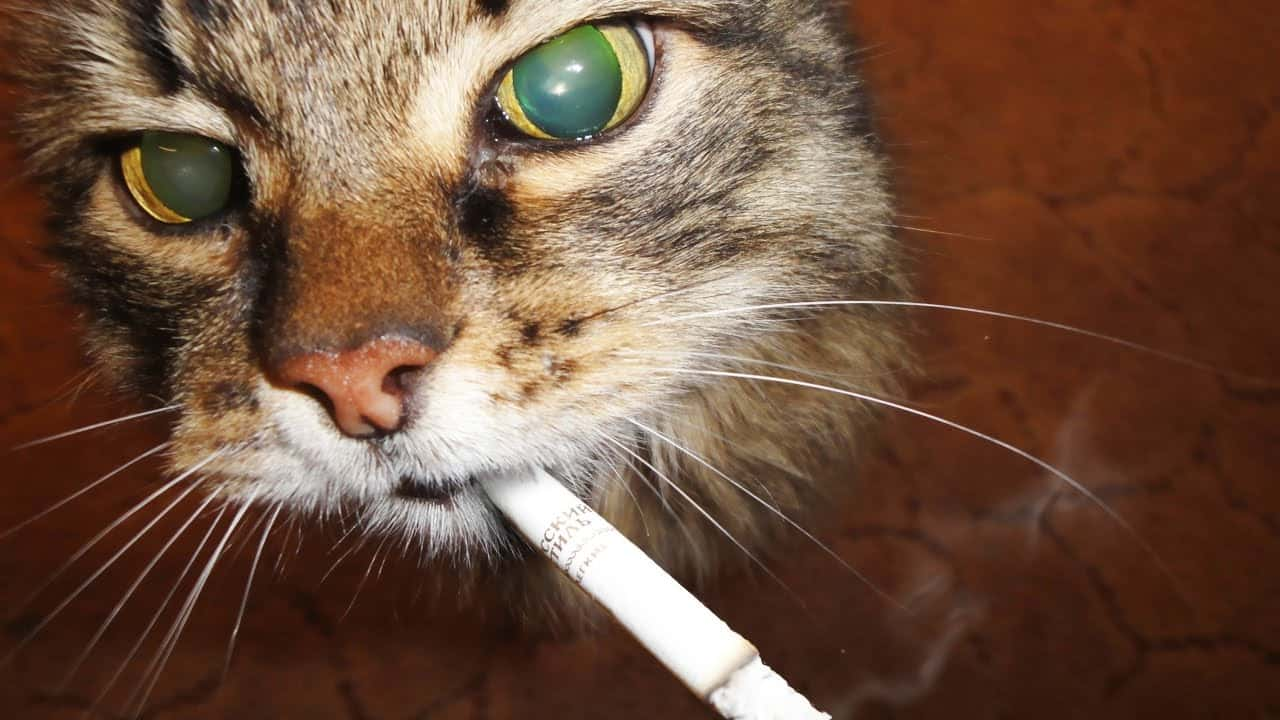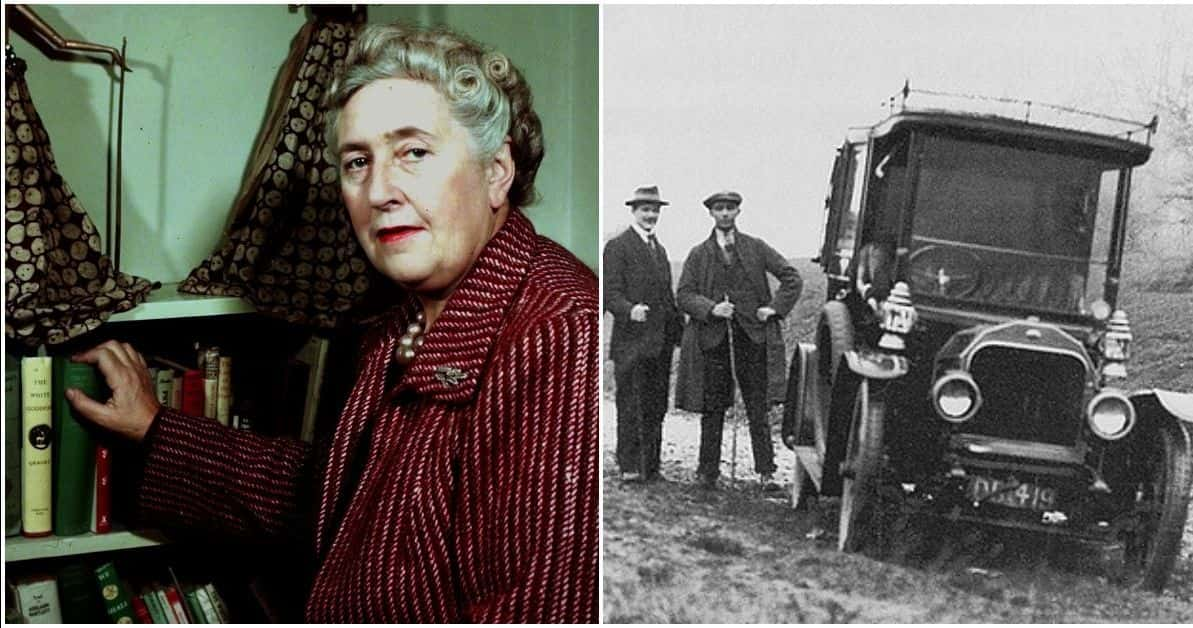“I'm sorry, but I do hate this differentiation between the sexes. 'The modern girl has a thoroughly businesslike attitude to life' That sort of thing. It's not a bit true! Some girls are businesslike and some aren't. Some men are sentimental and muddle-headed, others are clear-headed and logical. There are just different types of brains.”—Agatha Christie, Appointment With Death
It’s safe to say that Agatha Christie has gone down as one of the most well-loved and successful novelists in human history. Her books have continued to enthrall, entertain, and amaze readers, and audiences will be familiar with the many theatrical and cinematic adaptations of her works. So naturally, someone with such a deft ability to write mysteries must surely have had a life as gripping and enriched as her own literary accomplishments. For those of you who would love to know more about the woman behind some of your favorite books, we’ve provided this list of interesting facts.
Agatha Christie Facts
42. Number One!
According to the Guinness Book of World Records, Christie is “the best-selling novelist of all time.” Her novels have allegedly sold more than two billion copies so far, and so she's said to be eclipsed only by William Shakespeare and the Bible.
41. Origins
Christie was born on the 15th of September, 1890. Her full name was Agatha Mary Clarissa Miller, but she later became known by her first husband’s surname (more on him later).
40. A Psychiatrist’s Field Day
There have been many sinister, inventive ways that Christie has had her fictional characters killed. Among them include the following: “strangled by a raincoat belt, strangled by a ukulele string, jabbed in the neck with a venom-tipped dart, stabbed with a corn knife, stabbed with an ornamental Tunisian dagger, drowned in an apple tub, [and] crushed by a bear-shaped marble clock.”
39. Foreign Exchange Student?
When Christie was 15, she was sent to a finishing school in Paris to complete her education. By that point, she was also an enthusiastic reader, considering writing something of her own (Spoiler Alert: she'd do just that).
38. Still Waiting on the Klingon Edition…
Christie is the most translated author in the world, with her novels having been translated into 103 languages so far!
37. The Jewel in My Crown
Christie’s best-selling book is the mystery novel And Then There Were None. It’s been sold over 100 million times, making it the best-selling mystery novel of all time.
36. Is She a Spy??
During the Second World War, Christie was investigated by the British intelligence agency MI-5. Her 1941 book N or M? featured a character named Major Bletchley, which MI-5 feared was a reference to the covert codebreaking center called Bletchley Park (as featured in The Imitation Game). Christie’s explanation for this coincidence was that she had been stuck at Bletchley Park while on the train to London, and she used the name to one of her “least lovable characters” as an act of petty revenge. No doubt MI-5 was relieved to hear that.
35. A Shy Spirit
As a teenager, Christie trained to be a classical musician. However, she abandoned this plan due to the fact that she suffered from stage fright. Well, I have it on good authority that her backup plan turned out pretty well for her.
34. Try and Write Something, Sis!
The first time that Christie ever wrote a book was in response to a dare. Her sister, Madge, challenged Christie to try her hand at a full-length novel. Christie ended up writing The Mysterious Affair at Styles. The novel features a soldier on sick leave getting involved in a conspiracy at his friend’s home, and it was also the first appearance of renowned Christie character Hercule Poirot.
 The Bookworm Chronicles - WordPress
The Bookworm Chronicles - WordPress
33. In Hindsight, We Were Dumb
Sadly, despite proving her sister wrong by finishing a book, getting it published was a whole new uphill battle. Christie’s first book was rejected by six different publishers over the course of five years before someone finally agreed to take it on.
32. A Fitting Tribute
Along with Poirot, one of the most famous literary characters of Christie’s bibliography is Miss Marple, the aging spinster who serves as a detective in twelve novels and five short story collections written by Christie. It’s been discovered that the inspiration behind Miss Marple was Christie’s own grandmother. We’re sure her grandmother would be honored by that.
31. His Moustache Never Left My Mind
As for Hercule Poirot, Christie was inspired to create him based on an incident in the 1910s when she witnessed a Belgian man leaving a train. His unique appearance helped form the basis for the detective who would solve mystery after mystery in Christie’s novels.
30. Thank God There’s No Social Media!
Christie was staunchly opposed to having her photograph appear on any part of her books, but this wasn’t a case of being camera-shy (she posed for cameras often enough on her travels). Some speculate that this was because she preferred anonymity as a famous writer and didn’t want some weird fans tracking her down.
29. Can You Feel the Love?
Besides the name “Agatha Christie,” Christie also used the pseudonym “Mary Westmacott.” Westmacott’s bibliography consisted of six novels, but they were romances, not mysteries, which explains why she didn’t release them under her main pen name.
28. This Didn’t Age Well…
The books which Christie wrote before the Second World War have come under fire in some quarters due to her use of cultural stereotypes when creating characters, particularly when writing characters of Jewish faith. This, of course, changed after the Second World War, so some argue that it was a case of Christie being a product of her time rather than being malicious. But that's a debate for another time and place.
27. First Marriage
On the 12th of October 1912, Christie attended a ball held by Lord and Lady Clifford in Ugbrooke, Devonshire. It was there she met her future husband, Archibald, who was a British army officer originally born in India. They were married on Christmas Eve of 1914.
26. Learning Her Letters Come Hell or High Water
Christie spent her youth being homeschooled by her mother and several governesses employed by her family. The reason why Christie didn’t go to school was because her mother was allegedly opposed to her receiving an education. Until she was eight years old, Christie taught herself!
25. Next of Kin
Christie’s only child, a daughter, was born in August 1919 in Ashfield, where Christie and her first husband, Archie, had moved after the First World War. Her name was Rosalind Margaret Clarissa Christie (she later took on the surname Hicks).
24. My Quota’s My Quota
For many years, Christie enforced a regimen on herself which had her producing two books per year. She even arranged it so that readers would always have a new “Christie [book] for Christmas,” having the second book of the year out just in time for the holidays. That's some serious work ethic!
 iStock
iStock
23. Frequent Figure
Of all Christie’s literary protagonists, Hercule Poirot is her most prolific one. He appeared in 33 novels, one theatrical play, and more than 50 short stories.
22. Seeing the World
During the 1920s, the British Empire Exhibition was touring the world to promote the last vestiges of Empire. Christie and her husband, Archie, were both involved in the promotion of said exhibition, and they went gung-ho about it. Leaving their daughter with Christie’s mother and sister, the Christies toured the world alongside the exhibition, going as far as South Africa and New Zealand.
 Pinterest
Pinterest
21. True Love Discovered
After Christie and her first husband divorced in 1928, she went abroad to Istanbul. From there, she took the Orient Express (it was a real train!) to Baghdad, meeting a British archaeologist who was thirteen years younger than her. This archaeologist, Max Mallowan, became her second husband, and the two remained married for more than 40 years until her death.
20. It’s Not Stealing, it’s Inspiration!
Like many writers, Christie frequently referenced earlier works of literature when titling her books. Four of her books’ titles (Sad Cypress, There is a Tide…, Absent in the Spring, and By the Pricking of my Thumbs) were taken from Shakespeare’s works. Three other titles (Evil Under the Sun, The Burden, and The Pale Horse) are references to passages from the Bible.
19. I Hate Him!
Shockingly, Christie actually despised Hercule Poirot. She denounced him as a “detestable, bombastic, tiresome, egocentric little creep.” As a result, whenever she would put theatrical adaptations of her own novels, she would completely remove him from the stories whenever possible! No doubt Albert Finney and Kenneth Branagh count their lucky stars that Christie wasn’t in charge of the movie adaptations or else they’d have been out of work (and in Finney’s case, an Oscar nomination).
18. The Protagonists Carry a Whip and Fedora, That Hasn't Been Done Before, Right?
Speaking of her happy marriage to archaeologist Max Mallowan, Christie would go on to incorporate archaeology into her books. Notable examples of this are the books Death on the Nile, Appointment with Death, and Murder in Mesopotamia. All these books took place at various exotic locales filled with historical sites.
17. Come by for a Visit
Christie kept a summer cottage in Devonshire, England during her lifetime. Today, that cottage is now available to rent out. It includes furniture and a piano which Christie actually owned, and all for around $500 per night—maybe it'll stimulate aspiring writers? Worth a shot!
16. Cowabunga!
Christie, along with her first husband Archie, travelled to Australia, New Zealand, and Hawaii in 1922. While they were there, Christie tried out a new sport which was quickly gaining in popularity at the time: surfing. Christie took great joy writing about her success at keeping her balance on the board as she rode back to shore.
Interestingly, Christie and Archie have been named as two of the very first British people to try surfing! Can you just picture her hangin' ten or riding the barrel? So pitted!
15. Did I Get to Kiss David Tennant?
Christie has been portrayed several times in fiction. Well-known actress Vanessa Redgrave played her in a highly fictionalized biopic about her life, while Fenella Woolgar acted as Christie in a 2008 episode of Doctor Who.
 Lefthanded Jeff
Lefthanded Jeff
14. RIP Hercule
Such was the influence of her literary hero Hercule Poirot that Christie’s fictional creation got an obituary in the New York Times. He remains the only fictional character to be given the honor of an official obituary in the historic paper.
13. Ultimate British Accolades
In 1956, Christie was awarded the CBE honor (Commander of the Order of the British Empire). In 1971, that honor was elevated to give her the title of Dame.
12. Keeping it in the Family
The Agatha Christie Society was formed in 1993 by Christie’s own daughter, Rosalind Margaret Clarissa Hicks. Hicks not only became its first president, but she also spent the rest of her life protecting and preserving her mother’s legacy and work. After Hicks’ passing in 2004, her responsibilities passed to her son, and Christie’s grandson, Matthew Pritchard.
 youtube
youtube
11. Is It Too Late to Invent Indiana Jones?
Christie ended up developing an intense enthusiasm for her second husband’s profession. Max Mallowan was a renowned archaeologist, and Christie would often come along with him to help him in any way she could. On one such excursion, she allegedly lamented that she hadn’t studied archaeology, which prompted her astonished husband to point out that “at this moment, you know more about prehistoric pottery than any woman in England?”
10. Got a Light?
This might seem strange to a lot of people, but Christie grew up in a time when smoking was seen as something perfectly respectable. In fact, there was a sense of obligation to smoke once in a while in polite society. Christie actually tried to make a habit out of smoking, but she resentfully admitted that she could not bring herself to do it. Oh, how times change.
9. Acknowledged with Darkness
When news of Christie’s death reached London’s West End, the theatres dimmed their lights for an hour out of respect.
8. Let’s Change These Horrible Books!
When Christie went into the business of adapting her books into theatrical productions, she was the first person to insist on the kind of changes and edits that normally make book fans scream with anger and renounce all adaptations. For example, she changed And Then There Were None to give it a happy ending worthy of the Hollywood censors, and changed the murderer in Appointment With Death to the story’s comic relief. As for the murder victim in that story, Christie rewrote it to explain that it was a suicide disguised as murder “to incriminate her family.” Looks like Christie was her own worst critic and editor!
7. Venom, not Violence
Despite her vast experience with the mystery genre, with her works frequently featuring murders to be solved, Christie very rarely used guns as murder weapons. We've listed some of the many gruesome ends she devised, but overall her preferred method was poison.
6. Call it Research
As the Second World War raged in Europe, Christie spent time working in a hospital pharmacy. Aside from contributing to the war effort, Christie ended up acquiring an incredible knowledge of drugs and poisons, which she put to good use in her subsequent novels.
 In The Loop - Forensic Science News
In The Loop - Forensic Science News
5. I Must Protect Her!
Christie finished writing the final book featuring Miss Marple in 1939, just in time for the UK to enter World War II. As a result, London was subjected to the devastating Blitz in the following years. Due to her fear of the Blitz destroying her literary work, Christie kept the final Marple novel locked in a bank vault. It wasn’t published until 1976!
 Pinterest
Pinterest
4. What’s in the Box?!
Many years after Christie’s death, one of her former trunks was bought by a fan. Inside, there was a locked box which the fan actually refused to open, content to keep the mystery alive. Four years later, the box was eventually opened: gold coins and diamond jewelry worth tens of thousands. Mysteries are great and all, but I think I'd take the treasure.
3. A Shocking Disappearance
In 1926, Christie’s first husband, Archie, demanded a divorce as he had found a new lover named Nancy Neele. On the third of December that he, Christie argued furiously with Archie until he stormed off to spend the weekend with his mistress, after which Christie simply disappeared. Her car was found abandoned the next morning.
2. Lost, Then Found
Christie’s disappearance sparked a major outcry, and thousands of volunteers searched for her. No trace of her was found until the 14th of December 1926, eleven days after her disappearance. Christie was found in the Swan Hydropathic Hotel in Yorkshire. Oddly, she was registered under the same surname as Archie’s mistress, and claimed to have no memory of what happened during those eleven days.
1. Tin-Foil Hats at the Ready!
Christie never mentioned what happened in her autobiography, and in true keeping with the nature of her books, the episode in her life remains a complete mystery to this day. At the time, she was diagnosed as having amnesia from being in a fugue state due to the terrible stress she was under at the time. That didn’t stop an irritated public from accusing her of carrying out a publicity stunt or even trying to frame her husband for murder.







